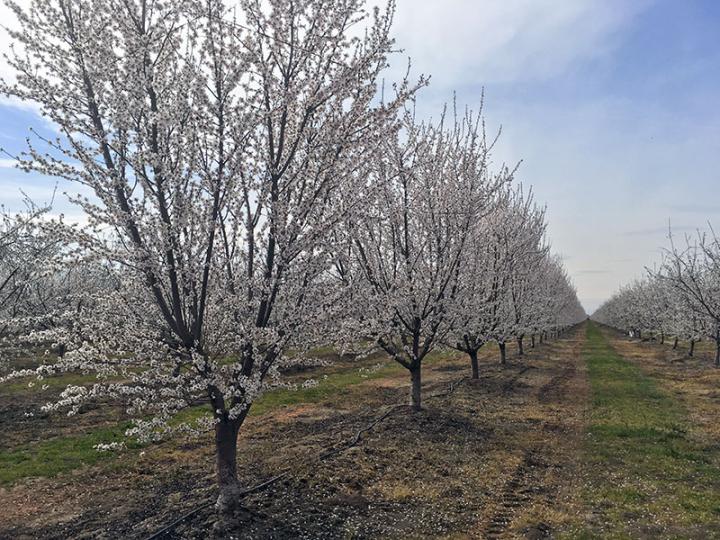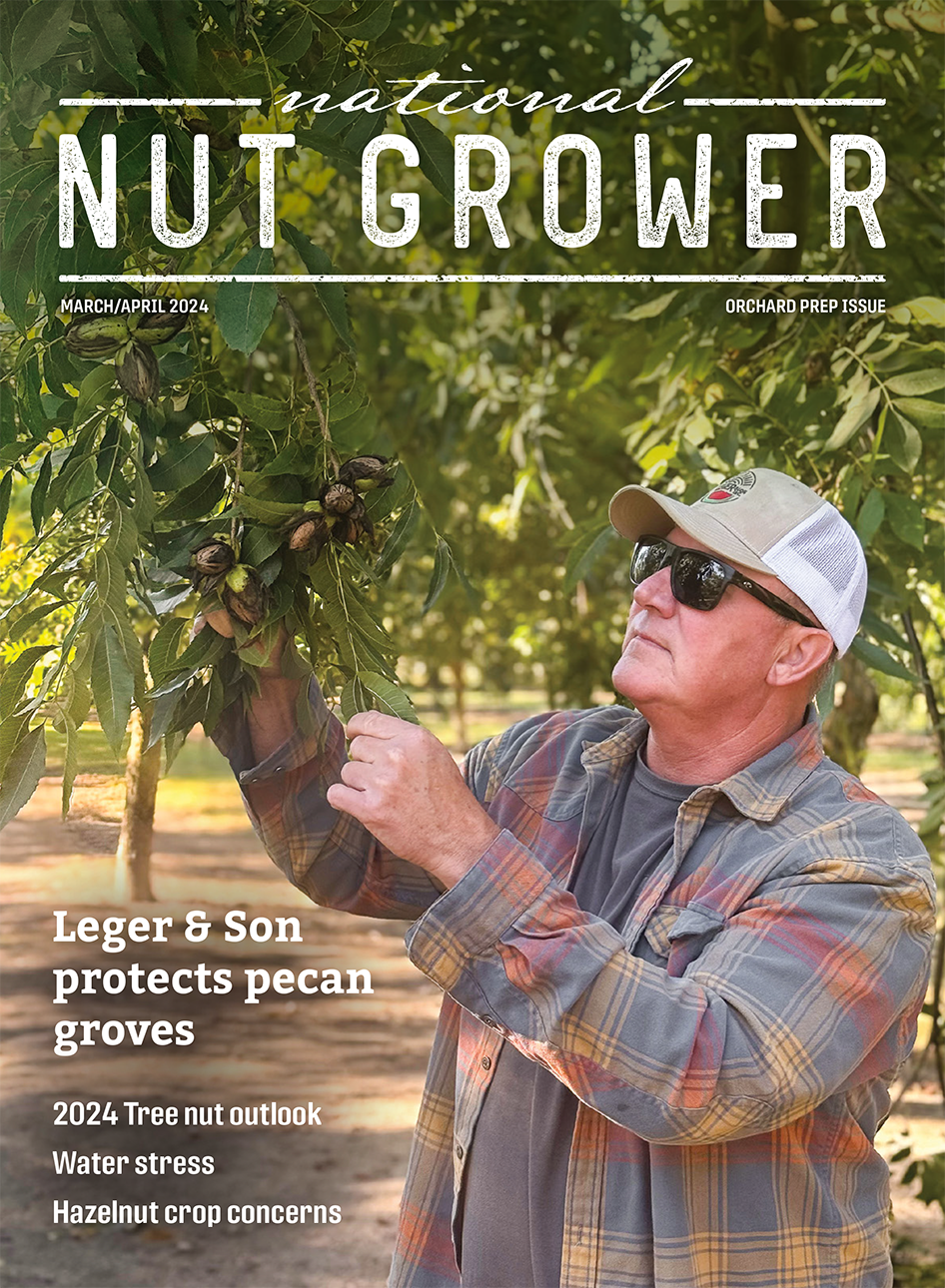A favorite healthy snack, almonds are a staple on grocery store shelves worldwide. More than 80% of these almonds are grown in California. As permanent crops, almond trees have unique needs and challenges for farmers.
Sat Darshan Khalsa, a member of the Soil Science Society of America, studies how almond trees use the key nutrient nitrogen. He recently presented his research at the virtual 2020 ASA-CSSA-SSSA Annual Meeting.
How does farming almonds, considered a deciduous permanent crop, differ from a traditional crop?
“These crops are an intersection between agricultural and forest ecosystems,” Khalsa explains. “Similar to annual cropping systems, deciduous permanent crops like almonds are intensively farmed. They receive high inputs of fertilizer and water with high nutrient outputs.”
At the same time, crops like almonds are managed under no-till conditions where soil is minimally disturbed. Tilling or digging of any kind would disturb the trees’ roots. In addition, almond trees shed leaves, grow woody tissue, and undergo other processes similar to trees in a real forest. These all have effects on carbon, nitrogen, and other nutrient cycles.
These characteristics can often mean that nutrients flow off of the field. They can get into areas like groundwater aquifers, where they can impact drinking water supplies for rural communities. Khalsa’s work has tried to minimize this issue.
“Nitrogen is the primary nutrient tied to productivity,” he says. “At the same time, it’s an important pollutant that impacts air and water quality. Through our work, we can show that many almond growers in California are in a good position to continue to be highly productive. At the same time, they can protect, or even improve, environmental quality.”
Khalsa and his colleagues specifically studied a concept called nitrogen use efficiency. It helps farmers balance putting enough nitrogen on a field with protecting environmental quality. In their research, they show it is possible to have a high level of nitrogen use efficiency by using various conservation practices.
One of the conservation techniques is called nutrient budgeting. It’s a technique where inputs and outputs from a field are precisely measured to try to make them as balanced as possible. They also monitor the nutrients in leaves and soil.
Another technique is called fertigation, where fertilizer is applied through the irrigation system in a very targeted way. This allows it to be precisely measured and timed to meet the plants’ needs. The work of Khalsa’s team can also be applied to other specialty crops around the world to help farmers have a higher income while producing nutritious food.
“Matching supply and demand is the foundation of the 4R framework with the goal of improving the efficiency of nutrient management,” Khalsa says. “The 4R framework is: the right fertilizer source at the right rate, at the right time, in the right place. That’s what will help us be more efficient.”
Challenges remain in understanding how crops like almonds cycle nitrogen year to year and how farmers apply nitrogen fertilizer. Khalsa also says his research highlights the importance of integrating their research with information networks, including Certified Crop Advisers and Cooperative Extension.
Efforts to address these agricultural issues must focus on the desires and needs of the farmers, growers, and industry organizations. That kind of work helps promote adoption and create new research opportunities such as assessing soil health practices in orchards.
Khalsa encourages researchers to maintain curiosity throughout each step of the food value chain. This allows them to better understand how their research interests align with other scientists, policy makers, and individuals like consumers within food and farming industries.
“After decades of working with plants, soil, and water, I personally think that through understanding people, we will be able to solve the biggest problems,” he says. “Agriculture plays an essential role in communities worldwide. I find no better way to connect with anyone, anywhere than through the food we share.”
Sat Darshan Khalsa is a scientist at the University of California, Davis. This research was funded by the United States Department of Agriculture California Specialty Crop Block Grants, the Foundation for Food and Agricultural Research, the California Department of Food and Agriculture Fertilizer Research and Education Program, and the Almond Board of California.
– Rachel Schutte, American Society of Agronomy








